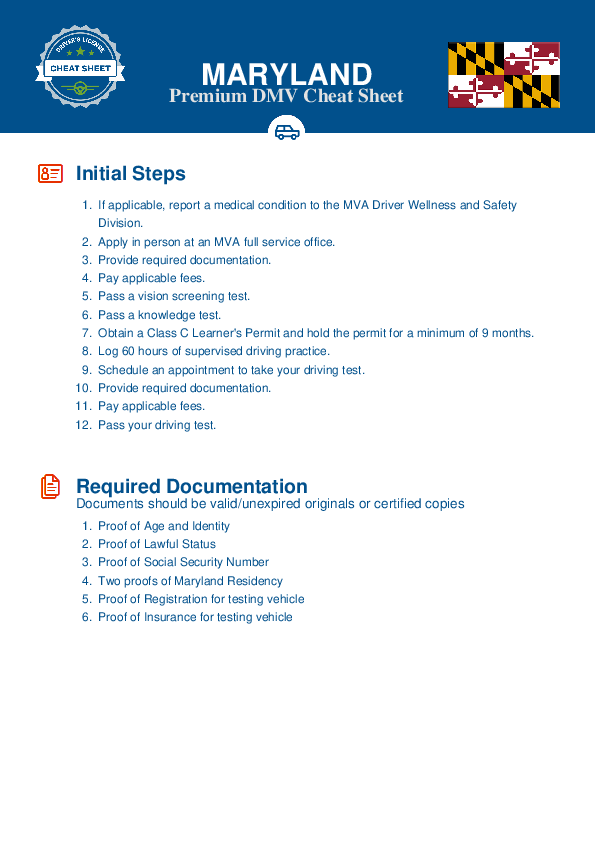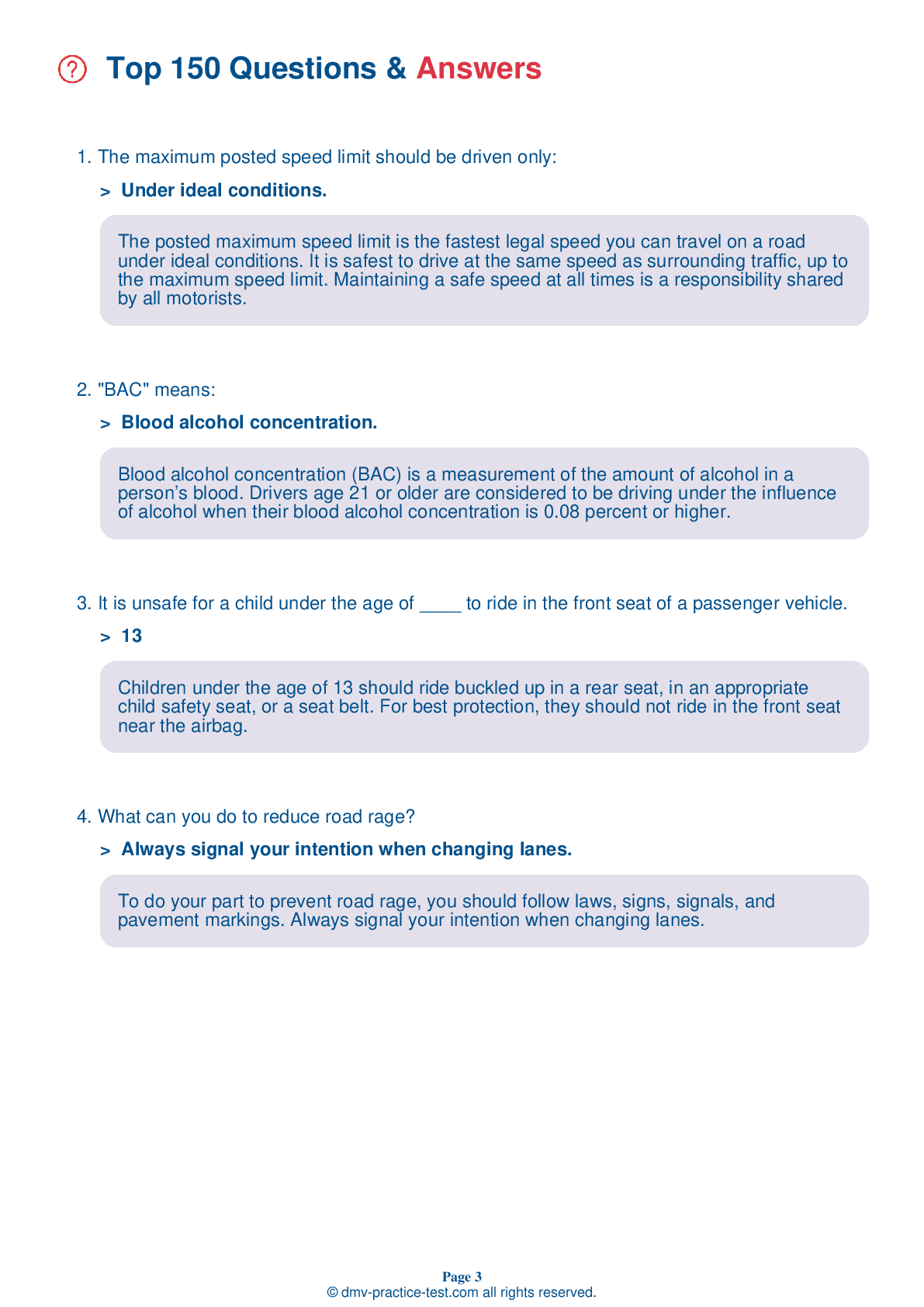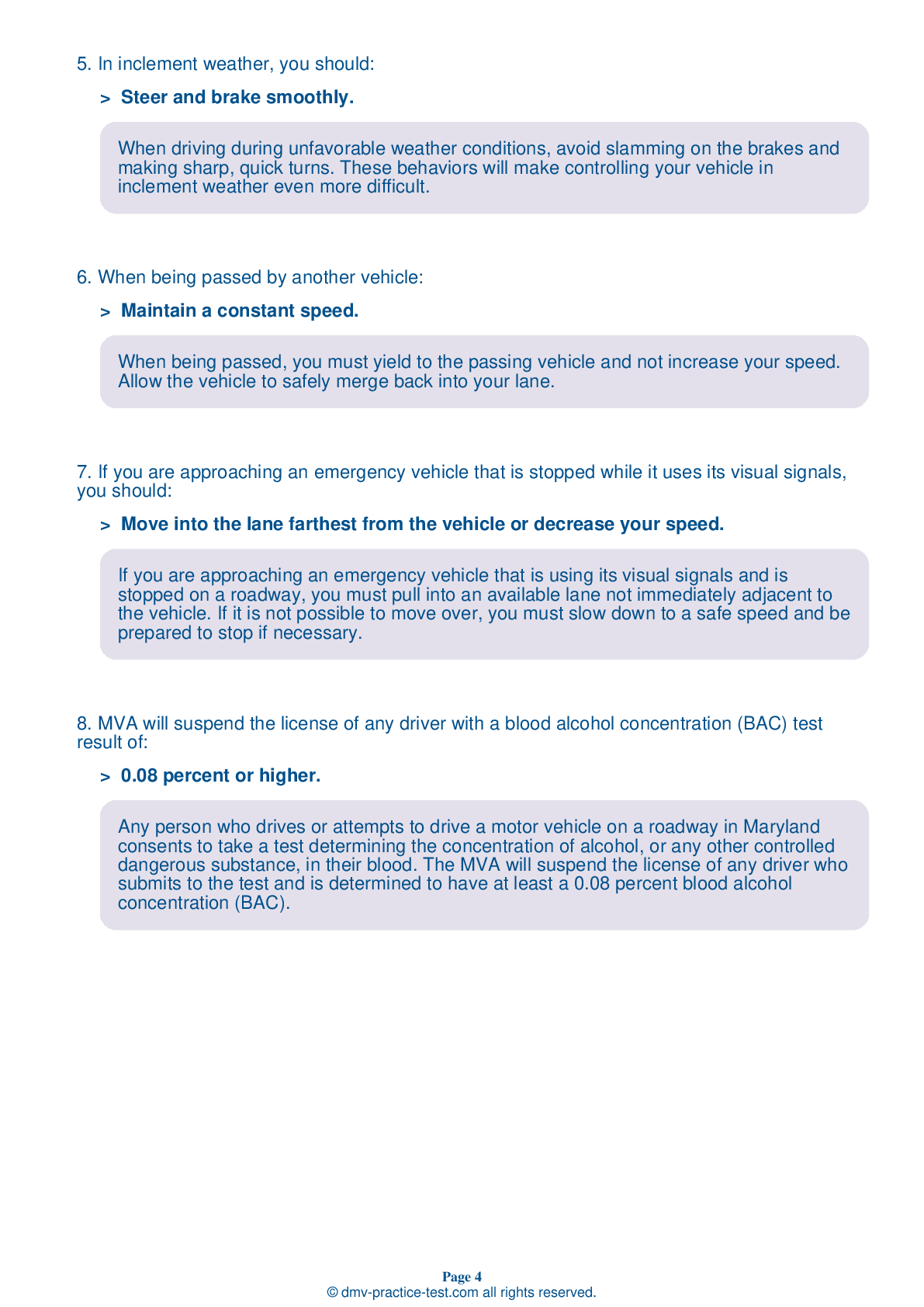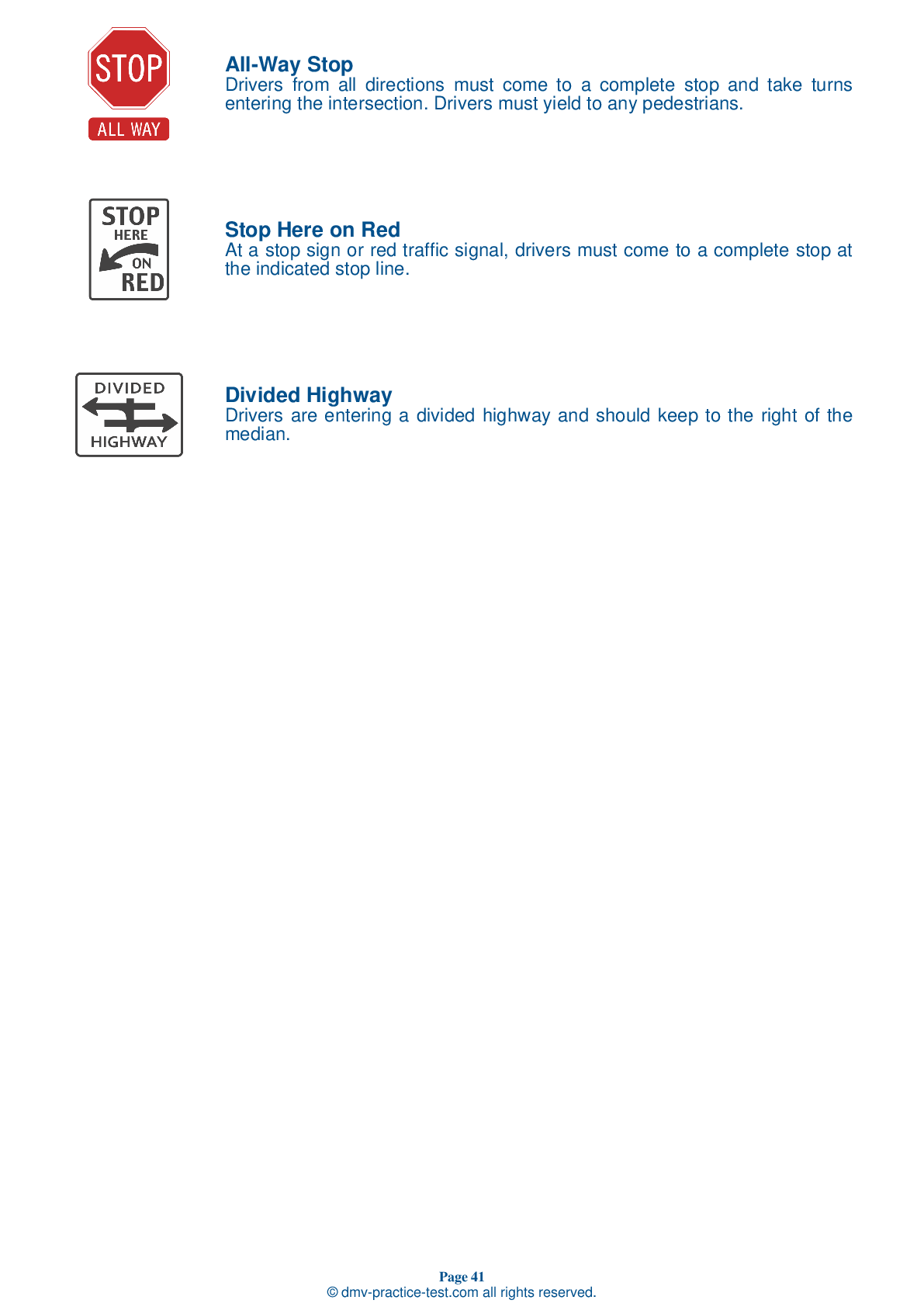FREE Maryland DMV Practice Test #8 Page 2 of 3
Maryland DMV practise examinations have been updated for January 2026. It includes questions based on the Maryland Driver Handbook's most essential traffic signals and regulations for 2026. Use actual questions that are very similar (often identical!) to the DMV driving permit test and driver's licence exam to study for the DMV driving permit test and driver's licence exam.
On the practise exam, each question gets a tip and explanation to help you remember the concepts. The written component of the official Maryland DMV test will include questions about traffic rules, traffic signs, and driving statutes, as well as knowledge from the Driver Handbook.
To obtain a passing grade, you must correctly answer 22 of the 25 questions. Take our DMV practise exam to help you prepare for your Maryland instruction permit or driver's licence.
The DMV exam is available in several languages.
Using any kind of testing assistance will result in an automatic fail, and the DMV may take additional action against your driver's licence, so stay away from it.
9 . It is very foggy. You should slow down and:
Use your low beams when driving in fog, snow, rain, or mist. Light from high beams will reflect off of precipitation, causing a glare and making it even more difficult to see. Some vehicles are equipped with fog lights that should be used in addition to low beam headlights.
10 . When approaching a person who is crossing the street while using a white cane or guide dog, you should:
When approaching a pedestrian who is using a white cane or guide dog while crossing the street, you must stop until the person is well away from your path of travel. Always yield the right-of-way to blind pedestrians.
11 . If convicted of driving while impaired by alcohol, jail time and fines may be ____ if children were present in the car at the time of the traffic stop.
Driving while impaired by drugs or alcohol is both illegal and dangerous. If a driver is stopped for impaired driving and children are present in the vehicle, the driver may face jail time and/or fines that are double the usual penalty.
12 . You should allow an extra cushion of space:
Drivers of trucks, buses, vans, or any vehicles pulling campers or trailers may not be able to see you if you are driving directly behind them. Increase your following distance when driving behind one of these vehicles. Additionally, large vehicles can block your view of the road, so increase your following distance to look around the sides of the vehicle and see the road ahead.
13 . Assuming that other drivers will always behave in the ways they are supposed to:
Driving defensively means that a driver avoids crashes by anticipating problems before they happen. A good defensive driver will never assume that other drivers are going to do what they should to drive safely. A driver should be prepared to respond to unsafe situations at any time.
14 . If you see orange construction signs and cones on a freeway, you must:
As you enter a work zone, signs and message boards will warn you of workers, slow-moving equipment, and/or closed lanes ahead. You should reduce your speed and be prepared to slow down or stop.
15 . If you encounter an aggressive driver, you should:
Drivers must respect and cooperate with all other road users and conform to specific rules in order to maintain order and to avoid crashes. When encountering an aggressive driver, it is safest to just get out of their way. Always avoid competing with other drivers.
16 . The amount of alcohol in the blood is referred to as:
Blood alcohol concentration (BAC) is a measurement of the percentage of alcohol in the blood. The higher the BAC number, the more impaired a person is.
2026 Maryland | Frequently Asked Questions
1. Be at least 15 years and 9 months old.
2. Pass the vision exam.
3. Complete the Maryland MVA Online Driver Test Tutorial.
4. Pass the knowledge test.
5. Provide proof of identity, age, and Maryland residency.
6. Have a parent or guardian co-sign your application.
7. Pay the required fee.
Remember, you must hold your learner's permit for nine months before you can take the driving test.



